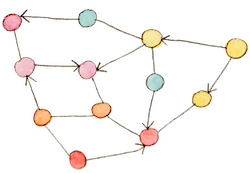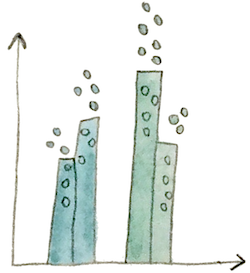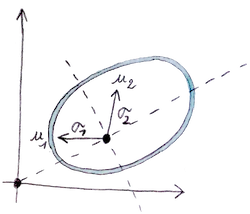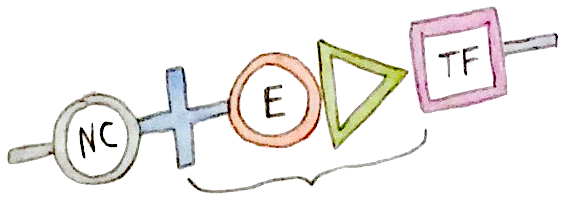 RESEARCH PROJECTS
RESEARCH PROJECTS
Metabolic fitness landscapes for evolutionary predictions
It is currently unclear if the molecular phenotypes observed in evolution experiments indicate (i) non-repeatability of evolutionary trajectories, (ii) the existence of local fitness optima, or (iii) distinct paths toward fitness maximization that are predictable in a probabilistic sense. Moreover, it is unclear why some molecular properties, such as metabolite abundances, or protein expression levels, are more or less conserved through evolution.
To predict fitness from cellular resource allocation, I am developing a mathematical and computational evolutionary framework based on the GBA formalism (Dourado et al., 2023). This framework will allow to predict evolutionary trajectories and their repeatability, and more generally to better understand the evolution of cellular metabolism, as well as decipher the first principles behind the evolution and the conservation of metabolism properties.
Deciphering the genetic architecture of polygenic adaptation in Tribolium castaneum
Many adaptation processes have a polygenic genetic basis. Characterizing the dynamics of polygenic adaptation in evolving populations and their underlying genetic architecture is difficult, and requires the development of new experimental approaches and statistical methods. In particular, the detection of genetic markers associated to polygenic traits is challenging, as weak but meaningful associations are often under the barrier of statistical detection, in addition to linkage desequilibrium and other known biases (Sella & Barton, 2019).
In this context, experimental evolution is a promising tool. By creating the conditions of polygenic adaptation in a controlled environment, this approach allows to characterize the adaptive dynamics at all the levels of the genotype-to-phenotype map, at the resolution of individuals.
During this project, I used the data collected during an experimental evolution with Tribolium castaneum (the red floor beetle, see e.g. Koch & Guillaume, 2020) to decipher the genetic architecture of adaptation. The objective of this project was to better understand the adaptation of populations to environmental change, as well as offering new methods to detect genetic markers of polygenic adaptation (published in Evolution Letters).
Collaborators (by alphabetical order): Frédéric Guillaume, Eva L. Koch.
Integrating road network topology for modeling human-mediated dispersal in terrestrial landscapes
Biological invasions are a major threat for biodiversity and human societies. Human-mediated dispersal (HMD) is responsible for transporting invasive species spread through landscapes. Existing models do not account for the topology of the road network, despite its important role in spatially constraining human travels.
In collaboration with Jérôme M.W. Gippet and Serge Fenet, I developed MoRIS (Model of Routes of Invasive Spread), a spatially explicit and mechanistic stochastic jump model to simulate HMD in terrestrial landscapes. Our modeling approach allows to easily account for the influence of the road network topology on the direction of human travels. By coupling the model to a data-based optimization algorithm (CMA-ES), we have shown that integrating the topology of the road network strongly improve our ability to explain the current distribution of the invasive ant Lasius neglectus in the middle Rhône valley, France (published in Ecography).
Collaborators (by alphabetical order): Aymeric Bonnamour, Serge Fenet, Jérôme M.W. Gippet, Bernard Kaufmann.
Modeling the principles behind metabolome conservation in mammals
Traditionally, metabolic evolution has been primarily studied by comparing enzyme content and pathway structure across species. Recent progress in metabolomics technology allows the systematic quantification of metabolite concentrations, the metabolome, offering a new perspective to interrogate the evolution of metabolic systems.
Within this interdisciplinary project, I have explored the evolving properties of kinetic models of mammalian metabolism using computer simulations. I have developed MetEvolSim (Metabolome Evolution Simulator), a simulation framework publicly available as a user friendly Python package. MetEvolSim takes as an input any SBML metabolic network model, as soon as the kinetic model is fully specified, and a stable steady-state exists. Steady-state concentrations are computed thanks to Copasi software. Using this model, I have shown that abundant metabolites are more coupled to fitness, and are therefore more conserved through evolution (published in PNAS).
Collaborators (by alphabetical order): Gábor Boross, Orsolya Liska, Balázs Papp.
Impact of an evolvable phenotypic noise on the adaptation rate of complex organisms
How does an evolvable phenotypic noise (the variability of isogenic populations in constant environment) impact the probability to fix beneficial mutations? How do the shape of the fitness landscape and the complexity of the phenotype relate to this mechanism? I asked these questions in this publication, where I show that phenotypic noise promotes the fixation of beneficial mutations on plateauing regions of the fitness landscape, and compensates for the cost of complexity. In particular, I show that the Gaussian fitness function classicaly used in quantitative genetics is a non-generic case regarding the effect of phenotypic noise on the gradient of selection, suggesting that other forms of fitness function (even close to a Gaussian shape) are preferable for who wants to study phenotypic noise.
These results raise many questions, e.g. in predictive evolution. I am always happy to discuss and share ideas on this topic.
For a shorter take-home message, check out this drawing by P. Biller.
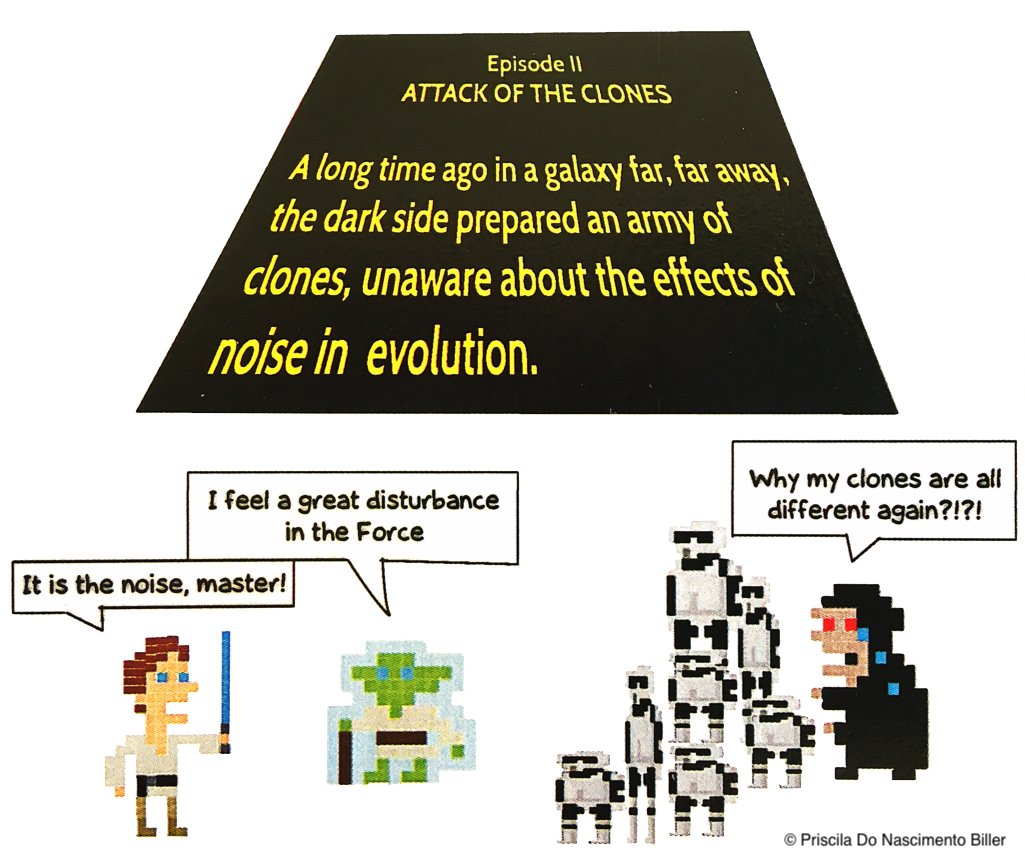
Collaborators (by alphabetical order): Samuel Bernard, Guillaume Beslon, Carole Knibbe.
Modeling the evolution of bacterial micro-organisms with numerical simulations
Evolution is the major source of complexity on Earth, at the origin of all the species we can observe, interact with or breed. On a smaller scale, evolution is at the heart of the adaptation process for many species, in particular micro-organisms (e.g. bacteria, viruses...). These organisms are not only organized by evolution, they are also organized to evolve (i.e. "evolution evolves").
During my PhD, I joined the EvoEvo European project to create an integrated computational model of evolution. I developed Evo2Sim (Evolution of Evolution Simulator), a multi-scale evolutionary model which takes into account the (ultra-fast) dynamics of metabolic networks, the (fast) dynamics of gene regulatory networks, the (medium to slow) dynamics of resources in the ecosystem and the (slow) evolutionary dynamics of genes and genome structure. Evo2Sim is designed to perform in silico experimental evolution experiments, that mimick real experimental evolution protocols. A detailed description of the model and its background can be found in my PhD manuscript.
Using this model, I have contributed to understand why stable diversification events by cross-feeding emerge in Lenski's E. coli long term evolution experiment (LTEE), due to the seasonality introduced by the daily tranfers (see my publication in PLoS Computational Biology).
Collaborators (by alphabetical order): Guillaume Beslon, Jessika Consuegra, Carole Knibbe, Dominique Schneider.


